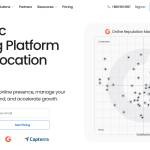Proxies are essential security tools whose primary role is to manage access to devices from internal networks to the internet. Notably, web proxies can be configured in different formats, from transparent mode to non-transparent mode. The basic premise under which transparent proxies work is that the devices or user doesn’t require any configuration for navigation within its architecture. Although this model is attractive and easy to set up, there are some limitations you need to understand to ensure success in its use. This guide highlights some of the use cases of transparent proxies and their limitations.
Choosing between a transparent or non-transparent proxy is often made based on convenience. Non-transparent proxies require settings on client devices, while transparent use the ‘plug-and-play” mechanism. They don’t require any unique settings to function. Both methods have advantages and disadvantages; however, it’s not a choice of either/or. They can function simultaneously, but you should always use transparent proxies for non-managed devices and non-transparent ones for managed devices.
What Are Transparent Proxies and Where to Use Them
Transparent proxies act as intermediaries between a user and the internet. When a user sends a request, the proxy intercepts it and decides whether to pass it to the original destination, modify it or drop it. One critical thing to note here is that transparent proxies identify themselves to the target website and reveal your IP in the HTTP header, contrary to other types of proxies’ work. Discussed below are some use cases of transparent proxies.
. Content Caching
Transparent proxies are known to improve a user connection speed and save on bandwidth since they create copies of stored data on their servers and serve the cached data to users on request. This process helps reduce server strain time by having the proxy provide the cached content instead of the service itself.
In practice, for instance, in a network without proper caching, a request requiring a 100 MB update carried out by 20 devices generates an internet consumption rate of 2,000 MB since all the devices need to request a copy of the data from the internet. However, with a cache feature, the first device requesting service will query the internet and the file stored on the local cache. The other devices that request the same item will download it locally, preventing connection overload and saving 1,900 MB of bandwidth.
. Monitoring and filtering content
Besides caching data, transparent proxies help monitor the actions of the users. In most instances, companies use them to prevent employees from visiting specific sites during work hours, such as by blocking access to social media sites and keeping attempt records of censored websites. On the other hand, non-transparent proxies do the opposite. They replace your IP address with a new one in a different location, so you can avoid geo-restrictions and other IP-based limitations. For example, if you’re looking to access content only available to Spain residents, you can get more information here about Spain residential proxies.
. User authentication
Transparent proxies act as a gateway ; therefore, they can block or modify traffic based on set rules. For example, most public hotels or shops offering Wi-Fi access implement gateways that require users to accept terms of agreement or register before connecting to the internet. It’s critical to note that not every transparent proxy is secure. Therefore, when using public Wi-Fi, ensure that there is a lock icon indicating that you’re on an encrypted connection. Otherwise, your privacy might end up being compromised if you’re not careful.
Transparent Proxy Limitations
Although inline proxies have various benefits, this model has some limitations and can be frustrating to use, as highlighted. Typically, the use of the HTTPS protocol within a proxy depends on the service intercepting the connection and generating its certificate that the client must accept to initiate a handshake communication. However, unless the server has the certificate imported, the act will generate an alert for an insecure connection. Nonetheless, where bulk deploy certificates are possible, this might not be a challenge, but in smaller structures doing this can generate considerable work demands.
Difference Between Transparent and Non-transparent Proxy Servers
The main difference between transparent and non-transparent is how they are set up. Non-transparent proxies are set up manually on devices, while the forced proxy is set up automatically, and once done, it routes network traffic via ports 80 and 443. The difference in setup makes the transparent proxy a good fit for us in different operating systems. Besides, it allows easy access to the web without requiring configuration on browsers or applications.
Conclusion
Transparent proxy servers significantly influence how we interact with the web. Whether they give organizations control over their networks, cache and serve data faster, or filter unsolicited content, they add functionality to the internet. However, from an anonymity angle, they are not the best at hiding your IP addresses since they reveal who is behind the proxy through the HTTP headers. For better anonymity, you might consider using anonymous proxies.
Lynn Martelli is an editor at Readability. She received her MFA in Creative Writing from Antioch University and has worked as an editor for over 10 years. Lynn has edited a wide variety of books, including fiction, non-fiction, memoirs, and more. In her free time, Lynn enjoys reading, writing, and spending time with her family and friends.















